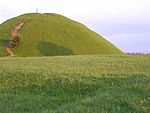Kraków-Podgórze Detention Centre

The Kraków-Podgórze Detention Centre (Polish: Areszt Śledczy Kraków Podgórze) is a correctional facility located at ul. Stefana Czarnieckiego 3 in Kraków, Poland, in the municipal district of Podgórze. Originally, it was a turn-of-the-century county court and revenue service, built in 1905, from design by Ferdynand Liebling. At present, it is a community branch of Detention Centre Kraków, with main building located at ul. Montelupich 7 street. The Kraków-Podgórze Detention Centre specializes in drug-and-alcohol-addiction therapy and serves also as a temporary arrest facility. It was created in 1971 as a prison for men with the holding capacity of 207. It was made into a detention facility in 1990. There's a medical clinic and a dentist on-site. Prisoners who completed the recovery program work with mentally and physically disabled clients.During World War II, it was a Nazi German prison, a place of secret detention and torture of Polish members of the Resistance, Armia Krajowa. It is memorialized as a notorious site of martyrdom during the German occupation of Poland. The prison facility had a Gestapo station attached to it.The prison was initially incorporated within the borders of the Kraków Ghetto when that district was created by the Nazis in March 1941; however, in the redistricting of June 1942 (following mass deportations of the Ghetto population) the whole street was placed outside the confines of the Ghetto.
Excerpt from the Wikipedia article Kraków-Podgórze Detention Centre (License: CC BY-SA 3.0, Authors, Images).Kraków-Podgórze Detention Centre
Stefana Czarnieckiego, Krakow Podgórze
Geographical coordinates (GPS) Address Nearby Places Show on map
Geographical coordinates (GPS)
| Latitude | Longitude |
|---|---|
| N 50.044433333333 ° | E 19.955263888889 ° |
Address
Stefana Czarnieckiego 3
30-529 Krakow, Podgórze
Lesser Poland Voivodeship, Poland
Open on Google Maps










